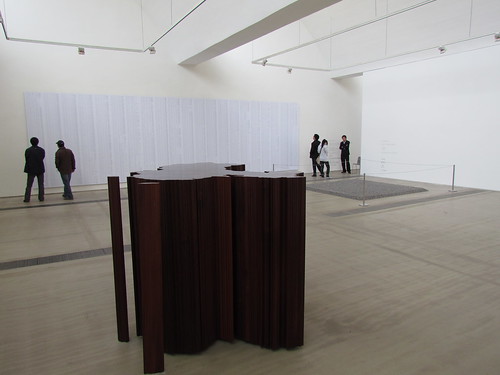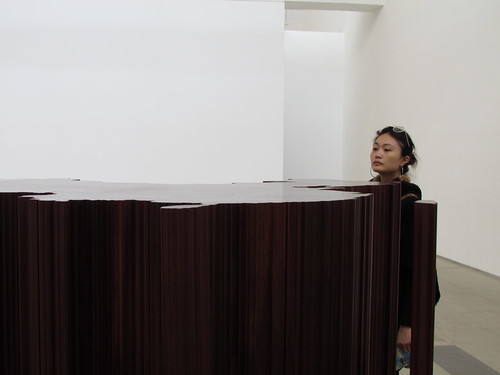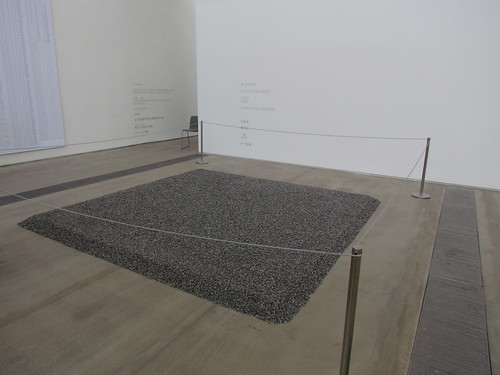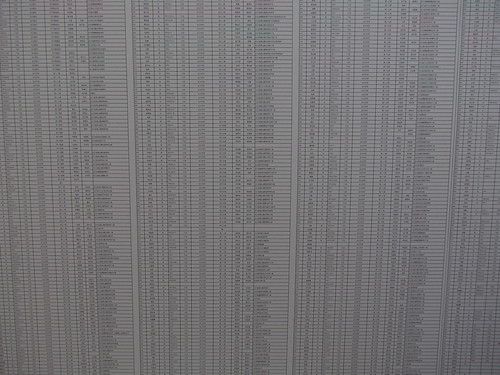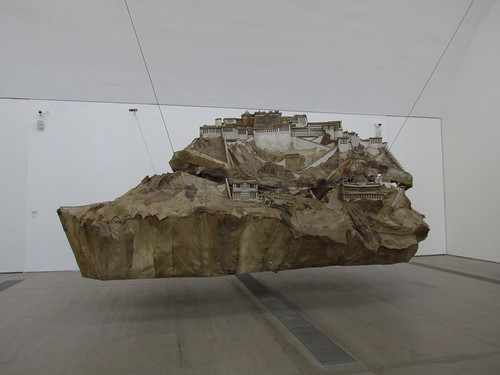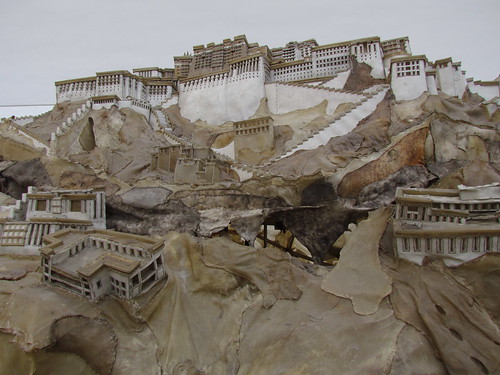works from the collection
Faurschou Foundation Beijing
7.10-31.12.11
installations
It is always a pleasure to see the works of Ai Weiwei, probably the
most famous Chinese artist at the moment. The Copenhagen/Beijing based
Faurschou gallery has gained a substantial part of his work, which is
now on display in their gallery in the 798 art district in Beijing. The
exhibition shows three of his works: "Map of China", "Sun Flower Seeds" and "Namelist of student earthquake victims found by the citizen investigation".
Exhibition view
"Map of China" is a
three-dimensional map of China made of wood from dismantled temples from the
Qing dynasty (1644-1911). Just like any country is a result of its history, China is a
product of its heritage. This is not a flat two-dimensional map. This
is a map of an immense number of layers, of a history as old as time
itself. The thickness is so massive you almost cannot see the surface
anymore. The heritage is so large you have no chance of getting an
overview anymore.
Ai Weiwei: Map of China
The
"Sun Flower Seeds" show just a small version of the massive installation
that filled the gigantic machine hall of Tate Modern in London earlier
this year. They both consist of a large number of small, handpainted
porcelain sculptures shaped like sunflower seeds. While the large
version displayed 100 000 000 such seeds, this one has "only" 1 ton (the actual number unknown). This must be
the most flexible artwork ever. It may be displayed in all kinds of
numbers, from one seed to one hundred million. Any number displayed will always
point to the total number of seeds produced. The sunflower seeds may
symbolise the Chinese people. The handpainted seeds may seem conform,
they are all slightly different, just like all people are. Displaying
only one portion of the seeds, can be like focusing on some groups of
Chinese, like minority groups, women, teenagers or other groups. The
seeds are travelling all over the world, just like there are Chinese all
over the world.
Ai Weiwei: Sunflower Seeds
"Namelist of student earthquake victims found by the citizen investigation" is as the title
states a list of the victims of the earthquake in Sichuan some years ago. As a
result of questionnable building techniques and materials schools and
public buildings collapsed, and the scope of the disaster was hushed
down. The artist set out to investigate, with a target to identify every
single victim. After all, nobody can be blamed for an earthquake
happening, and the artwork does not seem to look for scapegoats for
building unsafe building. It is all about the innocent people that
disappeared twice, first they died in the earthquake, then their names
did not appear on the official lists. This is just one of the many
disasters and hardships the people have had to endure during centuries,
no, millennias. But the sunflower seeds still offer hope and optimism.
Ai Weiwei: Namelist of student earthquake victims found by the citizen investigation
*
The exhibition also featured an installation by Liu Wei called "Don't Touch". This is a skin sculpture showing the Potala palace of Lhasa, Tibet. Who are not allowed to touch it, is it the viewers that could otherwise destroy the fragile sculpture, or is there a deeper meaning? Maybe someone else are not supposed to mess with the object on display?
Liu Wei: Don't touch
Liu Wei: Don't touch (detail)
About Sunflower Seeds at Tate Modern here
About Sunflower Seeds at Faurschou in Copenhagen here
